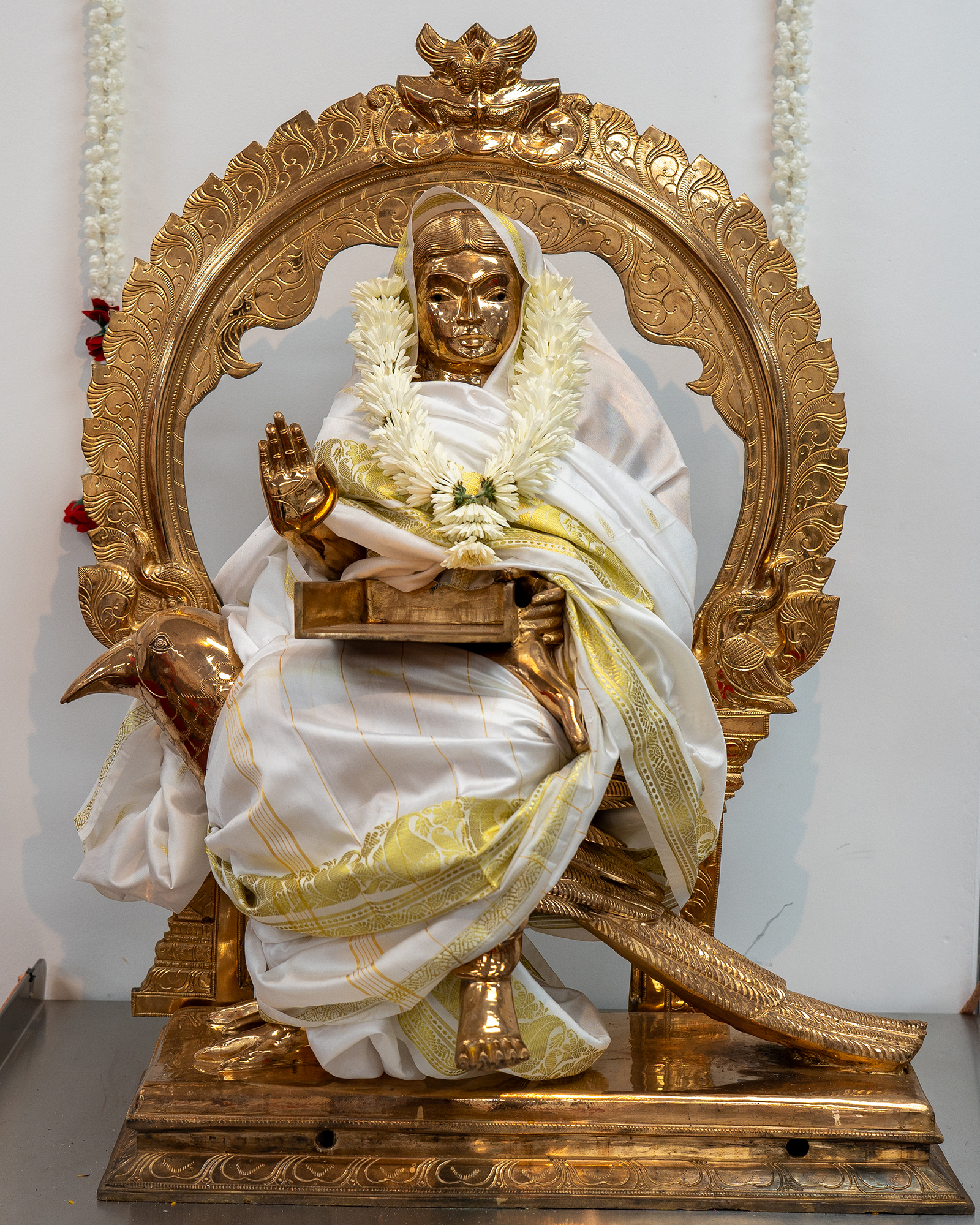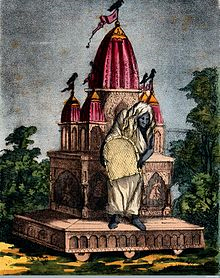
Dhoomavati Devi

Dhumavati is said to manifest herself at the time of cosmic dissolution (pralaya) and is “the Void” that exists before creation and after dissolution. While Dhumavati is generally associated with only inauspicious qualities, her thousand-name hymn relates her positive aspects as well as her negative ones. She is often called tender-hearted and a bestower of boons. Dhumavati is described as a great teacher, one who reveals ultimate knowledge of the universe, which is beyond the illusory divisions, like auspicious and inauspicious. Her ugly form teaches the devotee to look beyond the superficial, to look inwards and seek the inner truths of life. Dhumavati hardly has an independent existence outside the Mahavidya group. There is no historical mention of her before she is included among the Mahavidyas. [1] As a goddess of poverty, frustration, and despair, Daniélou associates Dhumavati with Nirriti, the goddess of disease and misery, and Alakshmi, the goddess of misfortune and poverty.[2] Kinsley adds another goddess to the list: Jyestha.[3]
The Vedic goddess Nirriti is associated with death, decay, bad luck, anger, and need. Hymns emphasize offerings to keep her away. Like Nirriti, Dhumavati is associated with unpromising things and hardship. Jyestha, also an early Hindu goddess, has similarities in iconography with Dhumavati. Like Dhumavati, she is dark, ugly and is associated with the crow. Jyestha is described as being unable to tolerate any auspiciousness. Also like Dhumavati, Jyestha dwells in quarrels, inauspicious places, and has a bad temper.[3] Lakshmana Desika, the commentator on the Saradatilaka-Tantra, identifies Dhumavati with Jyestha.[4] Both Alakshmi, the sister and antithesis of Lakshmi (Shri), the goddess of wealth, luck and beauty, and Dhumavati are described as old, carrying a broom and having a crow banner. Both symbolize hunger, thirst, need, and poverty.[3]
While there are similarities between Dhumavati and the three goddesses, the latter lack significant characteristics of Dhumavati, like her widowhood and a textual emphasis on her ugliness. The names of the three goddesses also do not figure in Dhumavati’s nama stotras (hymns invoking her many names), where such identifications could have been explicitly mentioned. The three also lack the more fierce warrior aspects of Dhumavati as well as her positive aspects in the context of the Mahavidyas. In scholar David Kinsley’s opinion, though the three may be Dhumavati’s antecedents, they are not “the same” as Dhumavati.[3] According to Kinsley, the concept of ten Mahavidyas may not be earlier than the 12th century.[5]
Dhumavati is described as a giver of siddhis (supernatural powers), a rescuer from all troubles, and a granter of all desires and rewards, including ultimate knowledge and moksha (salvation). Her worship is also prescribed for those who wish to defeat their foes. Dhumavati’s worship is considered ideal for unpaired members of society, such as bachelors, widows, and world renouncers as well as Tantrikas. In her Varanasi temple, however, she transcends her inauspiciousness and acquires the status of a local protective deity.
There, even married couples worship her. Although she has very few dedicated temples, her worship by Tantric ritual continues in private in secluded places like cremation grounds and forests.
